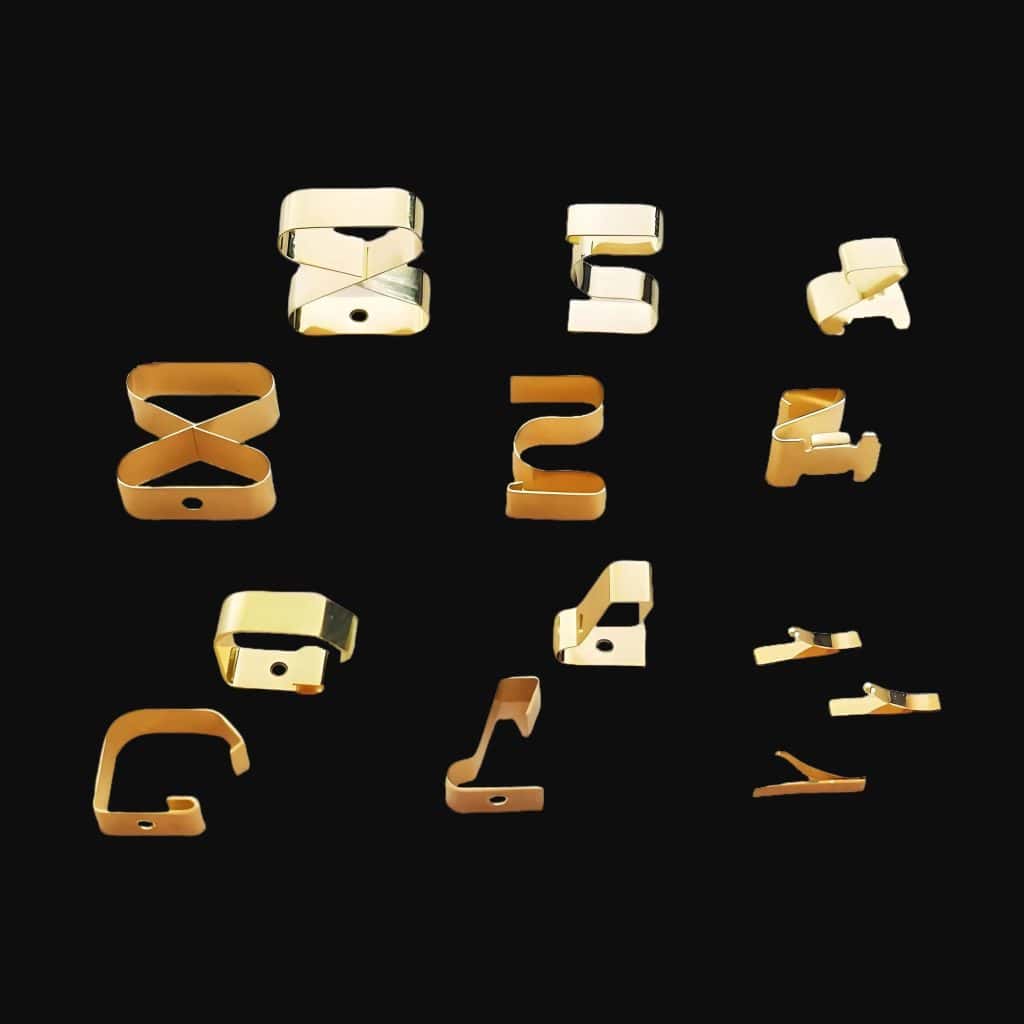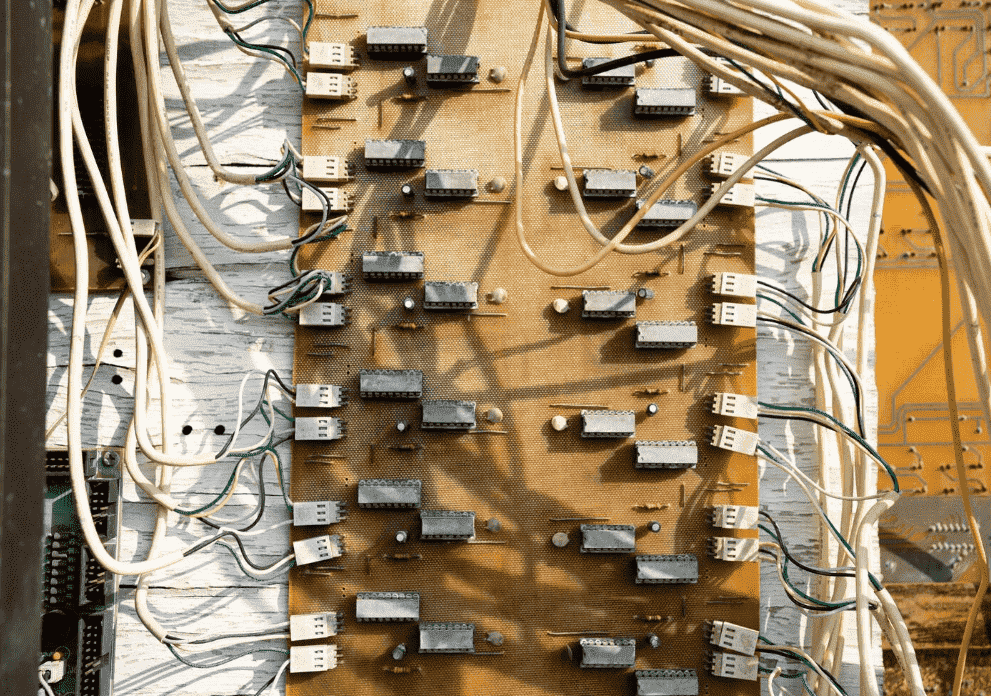电触指弹簧
Contact finger springs are crucial components in the field of electronics and electrical engineering. They play a pivotal role in ensuring reliable electrical connections in a wide array of devices and systems.
接触式手指弹簧简介
接触式手指弹簧是电子电气工程领域的重要部件。它们在确保各种设备和系统的可靠电气连接方面发挥着关键作用。理解这些组件需要深入研究它们的设计、功能、材料和应用。这一全面的探索将详细地涵盖所有这些方面。
Table of Contents
定义及目的
接触式手指弹簧,也称为接触弹簧或手指接触,是弹簧加载元件,旨在提供两个导电表面之间稳定和一致的电气连接。它们的主要目的是通过在触点之间施加恒定的力来保持安全可靠的电气连接,这有助于最大限度地减少间歇性连接、磨损和导电性差等问题。

设计与功能
1.设计元素
形状和结构:接触式手指弹簧通常被设计成特定的几何形状,允许它们压缩并恢复到原来的形状。常见的设计包括扁平、弯曲或圆柱形。这种设计通常类似于梳子或一系列手指,这就是为什么它们有时被称为“手指”弹簧。
材料组成:接触式指簧所选用的导电材料是考虑其导电性和机械柔韧性。
弹簧机构:弹簧机构的目的是提供一定的压力,以确保良好的接触。这种压力对于克服连接表面上的任何不规则性和保持长期接触至关重要。
2.功能
电触点:触指弹簧的主要功能是保持可靠的电连接。当两个导电表面连接在一起时,手指弹簧施加的力确保了一致的接触,降低了电气中断的风险。
公差补偿:在制造中,由于公差的原因,部件可能并不总是完美配合。接触式手指弹簧可以通过稍微调整其位置来补偿这些公差,以保持良好的连接。
耐磨性:随着时间的推移,反复连接和断开会对接触面造成磨损。接触式手指弹簧通过确保持续施加压力来帮助缓解这种情况,这有助于减少弹簧和接触面的磨损。

材料与制造
1.材料选择
不锈钢:具有很高的耐腐蚀性,用于暴露于潮湿或化学品的环境中。不锈钢弹簧经久耐用,可以承受恶劣的条件。
铜合金:包括黄铜和铍铜等材料。这些合金因其优越的导电性而受到青睐,这对于最小化电阻至关重要的应用至关重要。
磷青铜:以其优异的机械性能和抗疲劳性而闻名。它还具有良好的导电性,使其适用于许多接触弹簧应用。
2.生产流程
冲压:用于制造触指弹簧的一种常用工艺,用冲压机将金属片切割成形。这种方法对于大批量生产尺寸一致的弹簧是有效的。
精密切割:使用激光或水射流切割技术将弹簧切割到精确的规格。这种方法用于要求非常精确的尺寸和形状的应用。
热处理:为了提高弹簧的机械性能,它们可以进行热处理过程,如退火或回火。这种处理提高了弹簧的强度和柔韧性。

应用
接触式手指弹簧用于不同行业的各种应用中。以下是一些值得注意的例子:
1.电子连接器
在电子连接器中,接触式手指弹簧用于确保连接器和配套组件之间的可靠连接。这在空间有限的高密度连接器中尤其重要,并且连接的可靠性至关重要。

2.开关
接触式手指弹簧用于机械开关,以保持开关运动部件之间的一致接触。这确保开关正常工作,并在激活时提供可靠的电气连接。

4.电路板
在电路板中,接触式手指弹簧用于连接电路板的不同层或提供电路板与外部组件之间的连接。它们有助于在任何热膨胀或机械应力下保持稳定的电气连接。

4.汽车应用程序
在汽车电子产品中,接触式手指弹簧用于各种部件,如连接器,开关和传感器。它们的耐用性和可靠性对于汽车电气系统的正常运行至关重要,因为汽车电气系统会暴露在振动、温度变化和其他恶劣条件下。

5.消费电子产品
接触式手指弹簧也存在于消费类电子产品中,如移动电话、笔记本电脑和其他便携式设备。它们确保了这些设备中不同组件之间的可靠连接,从而提高了设备的整体性能和使用寿命。

好处和限制
1.好处
可靠性:接触式手指弹簧通过施加一致的压力提供可靠的连接,这有助于减少间歇性连接和信号丢失的风险。
耐用性:由高品质材料制成,接触式手指弹簧设计承受重复使用和暴露在各种环境条件下。
公差补偿:它们有助于补偿制造公差和表面不规则性,即使在不完美的条件下也能确保良好的连接。
2.限制
磨损:随着时间的推移,接触式手指弹簧可能会经历磨损,这可能会影响其性能。在某些应用中可能需要定期维护和更换。
成本:由特殊材料制成的高质量接触式手指弹簧价格昂贵。然而,它们在可靠性和性能方面的好处往往大于成本。
设计复杂性:接触式手指弹簧的设计可能很复杂,特别是在需要精确尺寸和性能特征的应用中。这种复杂性可能导致更高的制造成本和设计挑战。
未来趋势及发展
随着技术的不断发展,接触式手指弹簧领域有几个趋势和发展:
1.小型化
随着电子设备趋向于更小、更紧凑的趋势,对小型化接触式手指弹簧的需求越来越大。材料和制造技术的进步使生产更小,更精确的弹簧而不影响性能。
2.先进材料
新的材料和合金正在开发,以提高接触手指弹簧的性能。这些材料提供了更好的导电性、耐久性和对环境因素的抵抗力,有助于提高电子元件的整体可靠性。
3.改进的制造技术
制造技术的进步,如3D打印和精密加工,使生产更复杂和定制的接触手指弹簧成为可能。这些技术允许更大的设计灵活性和满足特定应用需求的能力。
总结
接触式手指弹簧是现代电子和电气系统中必不可少的部件,提供可靠和一致的电气连接。它们的设计、材料和应用是多种多样的,反映了它们在确保各种设备和系统正常运行方面的重要性。了解它们的功能、优点和局限性有助于为特定的应用程序选择正确的组件,并解决与其使用相关的任何挑战。随着技术的不断进步,接触式手指弹簧将继续发展,为电子和电气系统的持续发展做出贡献。
您可能也会喜欢
-
 编织金属丝网垫片:一种用途广泛的屏蔽方法
编织金属丝网垫片:一种用途广泛的屏蔽方法屏蔽垫片解决方案和材料
EMI 屏蔽垫片
编织金属丝网垫片采用细金属丝(通常是不锈钢或其他导电合金)编织成网状结构。这种设计使垫片能够紧密贴合配合表面,提供连续可靠的导电路径以屏蔽电磁干扰。编织金属丝网垫片的柔韧性和弹性使其适合密封电子外壳中的间隙和接头,有效阻挡宽频率范围内的电磁辐射。 编织金属丝网垫片采用细金属丝(通常是不锈钢或其他导电合金)编织成网状结构。这种设计使垫片能够紧密贴合配合表面,提供连续可靠的导电路径以屏蔽电磁干扰。编织......
